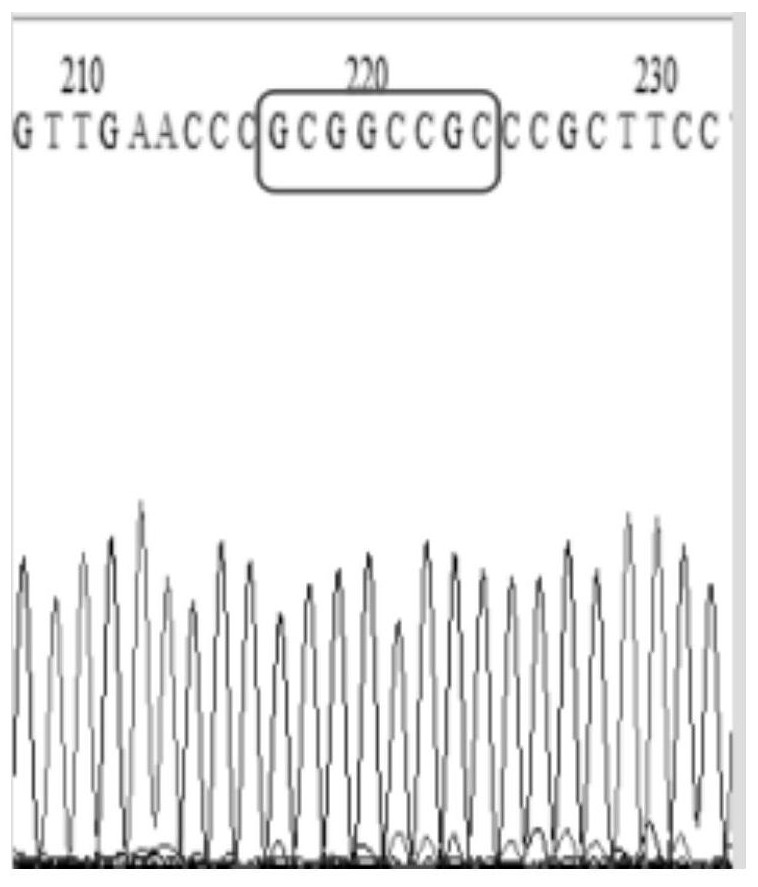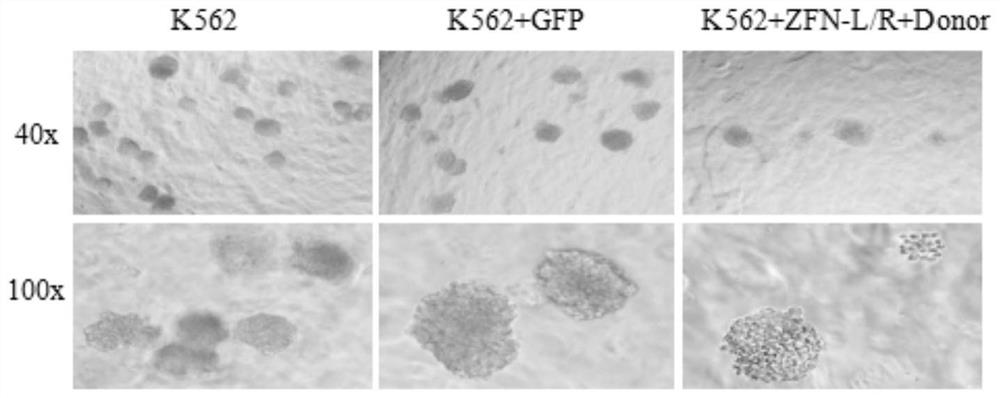A zinc finger nuclease that inhibits the expression of human bcr-abl fusion gene or causes the function loss of human bcr-abl gene and its application
A technology of bcr-abl and zinc finger nuclease, which is applied in the translation products of oncogenes, nucleic acid vectors, genetic engineering, etc., can solve the problems of unproven completeness, long TALENs fragments, potential safety hazards, etc.
- Summary
- Abstract
- Description
- Claims
- Application Information
AI Technical Summary
Problems solved by technology
Method used
Image
Examples
Embodiment 1
[0016] Example 1. Design and Construction of ZFN Plasmid and Donor Plasmid for Specific Target Site Sequence of Human bcr-abl Gene
[0017] 1. Design and synthesis of a zinc finger nuclease targeting the specific target site sequence of the human bcr-abl gene
[0018] According to the query and splicing of NCBI, the gene sequence of the human bcr-abl gene (as shown in SEQ ID No: 1) was determined, and the design of ZFNs was completed through the method of bioinformatics, and the zinc finger nucleic acid of the human bcr-abl gene was determined. The specific target site sequence for enzyme action is:
[0019] GGCGTCGACGGCgactacGAGGACGCCGAG (as shown in SEQ ID No: 2); the middle part sequence (gactac) is a FokI endonuclease cleavage site, that is, the target site sequence of ZFN specific knockout, and the FokI endonucleic acid used in the present invention The enzyme is an obligate heterodimerization Fok I plasmid, purchased from Addgene, which can avoid non-specific cleavage c...
Embodiment 2
[0079] Example 2. Zinc finger nuclease site-directed cutting of bcr-abl gene and insertion of NotI restriction site to promote homology-directed repair
[0080] 1. Recovery and culture of cryopreserved cells
[0081]Take out the cryopreservation vial containing K562 cells from the liquid nitrogen, put it into warm water at 37°C and shake it quickly until the cryopreservation solution is completely melted; complete rewarming within 2 minutes; transfer the cell suspension into a sterile centrifuge tube, add Gently blow 5mL of culture solution; centrifuge the cell suspension at 1000r / min for 5min, discard the supernatant; add 1mL of complete medium to the centrifuge tube containing the cell pellet.
[0082] 2. Cell culture conditions and subculture:
[0083] cell culture conditions
[0084] Medium composition: 1640 (Gibco Lot: 1737734)
[0085] 10% FBS (BI Lot: 1616756)
[0086] Subculture:
[0087] (1) K562 cell density reaches about 80%;
[0088] (2) Repeatedly blow and b...
PUM
 Login to View More
Login to View More Abstract
Description
Claims
Application Information
 Login to View More
Login to View More - R&D
- Intellectual Property
- Life Sciences
- Materials
- Tech Scout
- Unparalleled Data Quality
- Higher Quality Content
- 60% Fewer Hallucinations
Browse by: Latest US Patents, China's latest patents, Technical Efficacy Thesaurus, Application Domain, Technology Topic, Popular Technical Reports.
© 2025 PatSnap. All rights reserved.Legal|Privacy policy|Modern Slavery Act Transparency Statement|Sitemap|About US| Contact US: help@patsnap.com



